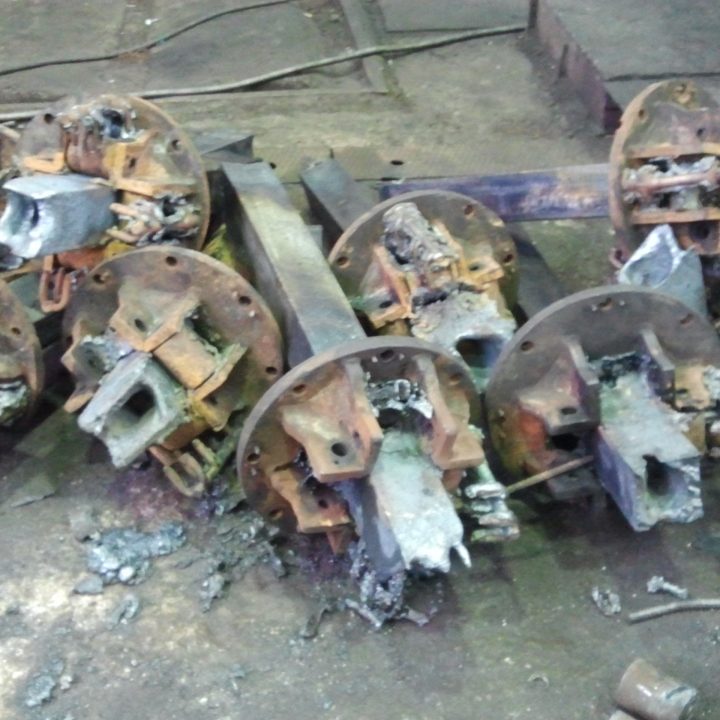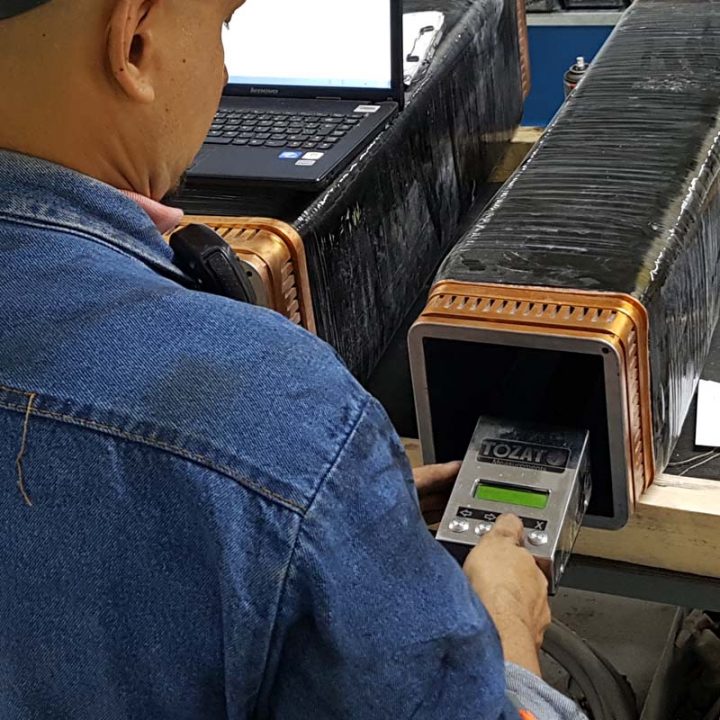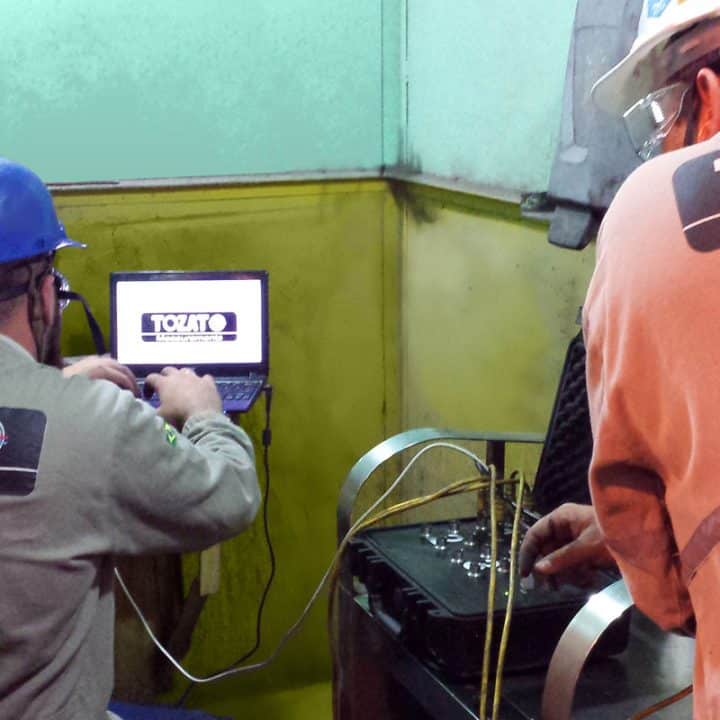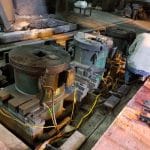The continuous casting machines’ oscillator may suffer interferences from many factors, therefore, leading to mold’s early wear. The relation between it and steel surface defects is huge, but when the root causes are properly handled, the problems is solved.
Tozato Measurements team performed a consultancy service at a customer that was experiencing a high rate of product downgrading. That being the case, it was noticed that the strands were presenting severe early wear problems in their molds as a result of frontal and lateral displacement errors.
Diagnosing the root causes of mold’s early wear
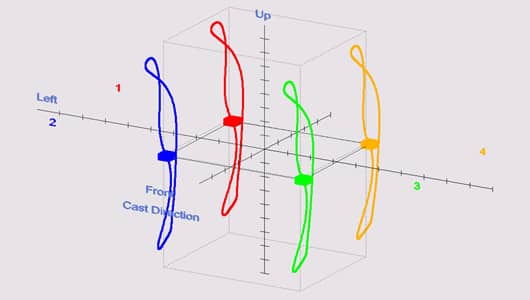
With the help of a portable oscillation monitoring system used on continuous casting machines, it was possible to have an overview of the oscillation motion in 3D. Therefore, it was detected that the combination of frontal and lateral displacement errors were causing a friction increase in between the mold and the product, and as a result, increasing the level of stress in the mold corner. This excessive friction causes a premature wear in the mold chromium layer, especially on the corners, which results in corner cracks defects previously reported by the customer.
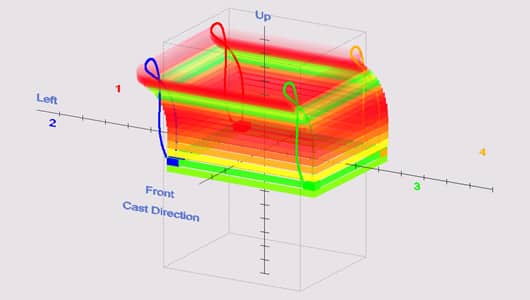
The combination of these severe frontal and lateral displacement errors were generating a high friction level (reddish area), mostly on the mold upper part. As a result, it was creating an early wear on the central and upper part of the mold as well.
It was used an accurate system to measure the mold faces and diagonals to detect the wear in the mold. Therefore, it enabled to confirm the high friction level in the mold upper part by reading the mold meniscus area.
Upshot
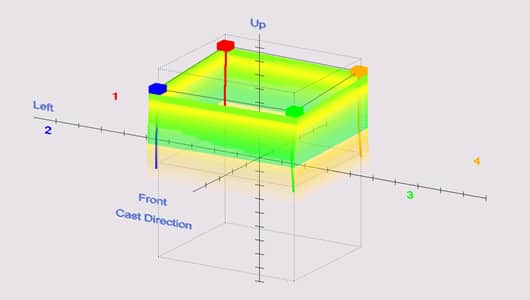
With the data collected on hands, it was diagnosed a misalignment of mechanical components, more specifically the foot rolls. Under those circumstances the set of foot rolls were displacing the mold out of its designed pass line. Thus, after adjusting and regulating the errors, the oscillation were fixed as well. As a final point, the short study reveals that the mold’s early wear can be really caused by oscillation trajectory errors therefore, causing friction and as consequence, surface defect on the product. Given these points, it is possible to detect and fix problems in the oscillation table using high accurate measurement systems and as a result, avoid economical losses in the production process.


